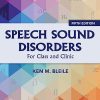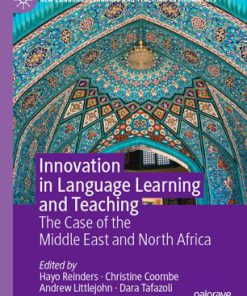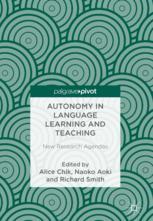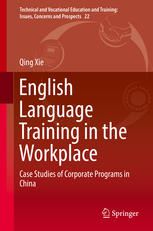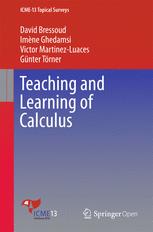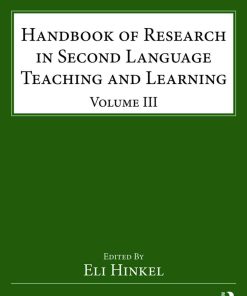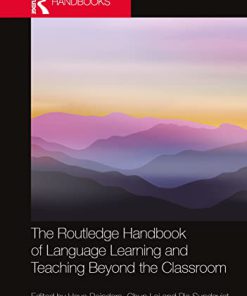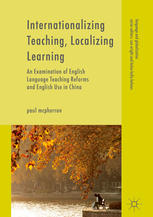Innovation in Language Learning and Teaching The Case of China 1st Edition by Hayo Reinders 1137600929 9781137600929
$50.00 Original price was: $50.00.$25.00Current price is: $25.00.
Innovation in Language Learning and Teaching: The Case of China 1st Edition by Hayo Reinders – Ebook PDF Instant Download/DeliveryISBN: 1137600929, 9781137600929
Full download Innovation in Language Learning and Teaching: The Case of China 1st Edition after payment.
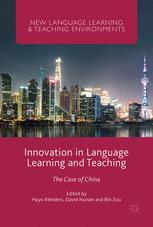
Product details:
ISBN-10 : 1137600929
ISBN-13 : 9781137600929
Author: Hayo Reinders
This book evaluates the origins of processes of change in language teaching in China, and the factors influencing their success. Examining diverse experiences and drawing on the perspectives of academics from the top institutions in the country, the authors analyse the complex interplay between global and local influences on language policies. Encouraging discussion of the significant education reforms that have taken place in China in recent years, this work will be of interest to students and scholars of language education, English as a Second Language and applied linguistics.
Innovation in Language Learning and Teaching: The Case of China 1st Table of contents:
1: Innovation in China: An Overview
1 Language Education in China: An Historical Overview
2 The Contemporary Landscape
3 Agents of Change in China
3.1 Contact with People from Abroad
3.2 The ‘Internationalization’ of Education
3.3 The Impact of Technology
4 In This Volume
5 Conclusion
References
2: Assessment for Learning in English Language Classrooms in China: Contexts, Problems, and Solu
1 Introduction
2 Assessment for Learning: Definition, Key Elements, and Principles of Good Practice
3 Making Sense of the Chinese Contexts for Assessment: Macro-, Meso-, and Micro-Levels
4 AfL Research in China
4.1 Teachers’ Conceptions of Assessment
4.2 Teacher AfL Practice
4.3 AfL and Teacher Assessment Literacy
5 Problematizing AfL in China
6 Conclusions and Implications
References
3: Learning to Speak in an Exam-Focused World: A Study of Independent Language Learning in Chi
1 Introduction
2 English Learning in China
3 Independent Language Learning
4 Methodology
4.1 Research Questions
4.2 Design of the Study
4.3 Interview Questions
5 Findings and Discussion
5.1 How Much Is Speaking Practiced and Assessed in Required Courses?
5.2 To What Extent Did Informants Supplement Speaking Opportunities by Taking Additional Courses?
6 Supplementing with ILL
7 Challenges
8 Conclusion
Notes
References
4: Innovations in Writing Instruction in China: Metasynthesis of Qualitative Research for the P
1 Introduction
1.1 Issues and Pedagogies Related to Teaching Writing to EFL/ESL Students in China
1.2 What Constitutes Innovations in Writing Instruction in China
2 Methodology
3 Results
3.1 Findings on Non-product-based Approaches to Teaching Writing (Pedagogical Innovations)
3.1.1 Pedagogical Innovations in Primary Education
3.1.2 Pedagogical Innovations in Secondary Education
3.1.3 Pedagogical Innovations in Higher Education
3.2 Findings on Use of ICT in Writing Instruction
3.2.1 ICT in Secondary Education
3.2.2 ICT in Higher Education
4 Lessons Learnt and Future Directions for Innovations in Writing Instruction
Appendix
References
5: Technology-Enhanced Content and Language Integrated Learning in Chinese Tertiary English Classe
1 Introduction
2 Literature Review
2.1 Theory and Practices of CLIL
2.2 Use of Technology in CLIL
3 Study One
3.1 Research Context
3.2 Design of the Wiki-Based Learning Environment
3.3 Data Sources
3.4 Results
3.4.1 Students’ Participation in the Wiki-Based Forum Discussion
3.4.2 Relationship Between Student Engagement and Conceptual Understanding and Language Use
3.4.3 Students’ Perceptions on the Wiki-Supported Learning Environment
4 Study Two
4.1 Research Context
4.2 Design of the Learning Environment
4.2.1 Computer-Supported CLIL Environment
4.3 Data Sources
4.4 Results
4.4.1 Student Online Engagement
4.4.2 Relations Between Student Online Engagement and Understanding
4.4.3 Student Perceptions of the Designed Environment and Learning Innovation
5 General Discussion and Conclusion
References
6: Debates Around the Orientation of TEFL in Chinese Tertiary Education
1 Introduction
2 English for General Purposes vs. English for Science and Technology (1978–1996)
3 English for Exam Purposes vs. English for Communicative Purposes (1996–2002)
4 English for Reading Purposes vs. English for Listening and Speaking (2002–2009)
5 English for Liberal Education vs. English for Academic Purposes (2010–)
6 Discussion and Implication
7 Conclusion
Appendix: A Framework of Reference for EFL Teaching at Tertiary Level in Shanghai (Revised Edit
Orientation and Objectives
Content and Goals
Curriculum and Arrangement
Assessment and Testing
Material Design and Development
Teacher Competence and Development
References
7: From EAP Teaching to English-Medium Instruction: Innovation in EFL Curriculum at Tsinghua Unive
1 Introduction
2 Impetus to EFL Curriculum Innovation
3 Rationale for EFL Curriculum Innovation at Tsinghua University
3.1 English and Globalization
3.2 Language Learning Principles
3.3 English as a Medium of Instruction
3.4 Needs Analysis
4 Innovation in the EFL Curriculum System at Tsinghua University
4.1 EAP Course Series
4.2 EMI Course Series for General Education
4.3 EMI Course Series for Professional Education
4.4 EFL Environment Platform
5 The Effectiveness of Tsinghua’s EFL Curriculum System
6 Conclusion
References
8: ESP/EAP Through English-Medium Instruction: Teachers’ Perceptions and Practices
1 Introduction
2 The Driving Force Behind the English Curriculum Innovation and Reform: Pitfalls of Previous E
3 Theoretical Backdrop, the New Model and Recommended Instructional Strategies
4 The Study
4.1 Research Questions
4.2 Research Design
4.3 Participants
4.4 Data Collection and Analysis
5 Findings
6 Discussion
7 Conclusion and Implications
References
9: Students’ Perceptions and Practices in L2 Disciplinary Writing at an English Medium Universi
1 Introduction
2 Writing-to-Learn Content and Writing in the Disciplines
3 Chinese Students’ Experiences in L2 Disciplinary Writing
4 The Study
4.1 Setting
4.2 Participants
4.3 Procedures
5 Results and Discussion
5.1 Language Use in L2 Disciplinary Writing
5.2 Perceptions of Rhetorical Norms and Disciplinary Conventions
5.3 Valued Practices in Learning to Write in the Disciplines
5.4 The Role of Writing in Developing Disciplinary Competences
6 Summary and Implications
References
10: The Implementation of EAP Instruction in a Local University in China
1 Introduction
2 Current English Language Education in China
3 The Necessity of EAP Instruction in China
4 The Local Context of English Language Education
5 Curriculum Innovations at ZSU
6 Research Aims and Methodology
6.1 Questionnaire Surveys
6.2 Interviews
6.3 Data Analysis
6.3.1 Students’ Perceptions
6.3.2 Teacher’s Perceptions of Local English Education Context
6.3.3 Teachers’ Perceptions of EAP Practice
7 Implementing the EAP Curriculum at ZSU
7.1 Skill-Focused, Content-Based Instruction
7.2 The Role of the Instructor and the Learner
7.3 Teaching Materials
7.4 Other Related Challenges
7.4.1 Varied Language Proficiency Levels
7.4.2 Poor Motivation and Attendance
7.4.3 Large Class Sizes
7.4.4 Lack of Subject Knowledge
8 Ongoing Reforms of the EAP Curriculum
9 Conclusion
References
11: Using Corpora to Investigate Chinese University EFL Learners
1 Current Issues in Tertiary English Teaching
2 The Introduction of English for Academic Purposes in China
3 The Use of Learner Corpora to Investigate Chinese Learners’ Interlanguage
3.1 Learner Corpora
3.2 Investigating Chinese EFL Learners’ Errors
3.3 Issues in Chinese Learner Corpora Research
4 Conclusion
References
12: Facilitating Transformative Learning Toward Productive Bilingualism: Innovations in Teaching En
1 Introduction
2 Literature Review
2.1 Teaching English for ICC Development in China
2.2 Productive Bilingualism
2.3 Transformative Learning
3 Methods
4 Findings
4.1 First Cycle (February 2014–January 2015)
4.2 Second Cycle (March 2015–January 2016)
4.3 Third Cycle (February 2016–June 2016)
5 Discussion
5.1 Criticalness
5.2 Openness
5.3 Incorporation
6 Conclusion
Appendix: Weekly Calendar of Language, Culture and Communication
�References
13: Contemporary Research in Intercultural Teaching in China: A Critical Review
1 Introduction
2 Overview
3 Four Themes in Recent Research (2000–2015)
3.1 Intercultural Communicative Competence
3.2 Teachers’ Beliefs and Practices Relating to Promoting Learners’ Intercultural Competence
3.3 Chinese Language Teachers in Different Pedagogic Contexts
3.4 Professional Development of Chinese Language Teachers
4 Concluding Reflections
References
14: Assessing Learner Autonomy: Development and Validation of a Localized Scale
1 Introduction
2 Learner Autonomy and its Assessment
2.1 Learner Autonomy in China
2.2 Assessing Autonomy
2.3 Assessing Learner Autonomy in China
3 Methods
3.1 The Context
3.2 Participants
3.3 Data Analysis Procedures
4 The Process of Constructing a Scale for Learner Autonomy
4.1 Item Generation
4.2 Validation
4.3 Reliability
4.4 Convergent and Discriminant Validity
5 Conclusions
People also search for Innovation in Language Learning and Teaching: The Case of China 1st:
innovation in language learning and teaching impact factor
innovation in language learning and teaching pdf
innovation in language learning and teaching scimago
innovation in language learning and teaching issn
innovation in language learning and teaching the case of korea
Tags: Innovation, Language Learning, Teaching, The Case, China, Hayo Reinders
You may also like…
Education Studies & Teaching - Teaching - Reading & Language
Education Studies & Teaching - School Education & Teaching
Autonomy in Language Learning and Teaching: New Research Agendas 1st Edition Alice Chik
Education Studies & Teaching
Education Studies & Teaching
Education Studies & Teaching - Education - General & Miscellaneous
Education Studies & Teaching - Teaching - Reading & Language
Language Teacher Leadership Insights from Research and Practice 2nd Edition Hayo Reinders
Education Studies & Teaching - Teaching - Reading & Language
Education Studies & Teaching



